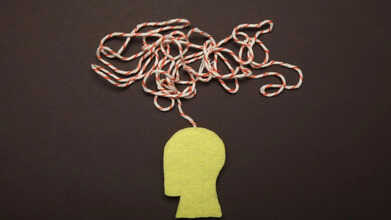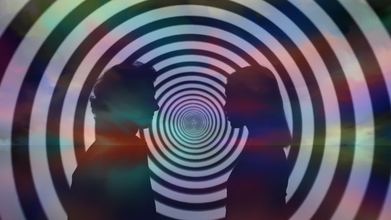- Health Conditions A-Z
- Health & Wellness
- Nutrition
- Fitness
- Health News
- Ayurveda
- Videos
- Medicine A-Z
- Parenting
- Web Stories
Hidden Signs of Adult ADHD You Might Be Overlooking, According to Experts

Credits: Canva
A doctor has highlighted the subtle signs he often observes in adults with Attention Deficit Hyperactivity Disorder (ADHD). These are traits people with ADHD may recognise in themselves but that are rarely discussed publicly. A consultant psychiatrist has highlighted subtle signs of Attention Deficit Hyperactivity Disorder (ADHD) that often go unnoticed. Dr. Ali Ajaz, who shares advice with over 97,600 TikTok followers, recently outlined six “hidden features” of ADHD that aren’t as widely discussed as the more familiar symptoms. These lesser-known traits can help adults recognise the condition in themselves or others.
What Is ADHD?
Attention-Deficit/Hyperactivity Disorder (ADHD) is a neurodevelopmental condition that begins in childhood and often continues into adulthood. It involves persistent challenges with attention, hyperactivity, and impulsive behaviour. Children with ADHD may struggle in school, face difficulties in relationships, and experience low self-esteem.
While symptoms can lessen over time, many continue to experience them as adults. Although there’s no cure, early diagnosis and a combination of medication, behavioural therapy, and education can significantly improve daily functioning and long-term outcomes.
ADHD Symptoms
The main symptoms of Attention-Deficit/Hyperactivity Disorder (ADHD) include difficulty focusing, impulsive behaviour, and excessive activity levels. Signs of the condition usually appear before the age of 12 and, in some cases, can be noticed as early as age 3. The symptoms can range from mild to severe and must be present in more than one environment, such as home, school, or work to confirm a diagnosis. These behaviours often interfere with growth, learning, and everyday functioning and may persist into adulthood.
ADHD is diagnosed more frequently in boys than in girls, though it can look different between the two. Boys are often more visibly hyperactive, while girls may show quieter patterns of inattention that can easily go unnoticed.
There are three main types of ADHD:
1. Predominantly Inattentive Type:
Individuals mainly struggle with concentration, organisation, and completing tasks. They may appear forgetful or easily distracted
2. Predominantly Hyperactive-Impulsive Type:
This form involves restlessness, excessive movement, and impulsive decisions. The person may act without considering the consequences or have difficulty sitting still.
3. Combined Type:
This type includes a mix of inattentive and hyperactive-impulsive symptoms, meeting the criteria for both categories.
Hidden Signs of Adult ADHD
Dr Ali Ajaz in his recent tiktok video talked about less than the 'classic' signs of the condition.
According to the doctor, people with ADHD often show certain behaviours that are rarely discussed but are quite common. One of them is hyperfocus which is getting so engrossed in something that they completely lose track of time. While this can be an advantage in some situations, it often causes them to ignore other responsibilities or personal needs.
Another sign is having an unusually high or low sex drive. For some, sex serves as a form of stimulation or a way to release tension, while for others, it feels like too much effort and concentration, leading to disinterest.
He also mentioned binge eating, explaining that the ADHD brain constantly seeks stimulation, and food becomes an easy source of instant gratification. Finally, he pointed out rejection sensitivity, where even mild criticism can feel deeply hurtful, often resulting in overthinking and emotional withdrawal.
The doctor went on to explain that low self-esteem and self-doubt are also very common among people with ADHD. These feelings often come from years of struggling with symptoms, either being told they are not trying hard enough or putting in their best effort but still falling short of expectations. Over time, this combination can deeply affect confidence and self-worth.
Lastly, he mentioned chronic gut problems such as bloating, pain, constipation, or diarrhoea. These issues, he said, are closely linked to the gut-brain connection, as ADHD brains often show signs of inflammation. Much of this inflammation, he explained, comes from diet and eating patterns.
This Common Antidepressant May Quietly Raise Your Blood Pressure, Even As It Helps You Lose Weight

Credits: Canva
Antidepressants side effects weight gain: Antidepressants, widely used to manage mental health conditions, can affect weight, heart rate, and blood pressure, though these changes differ depending on the specific drug. Researchers from King’s College London’s Institute of Psychiatry, Psychology & Neuroscience (IoPPN) conducted one of the most extensive reviews to date, comparing the physical effects of 30 antidepressants. The findings, published in The Lancet, draw on data from over 150 clinical trials involving 58,534 participants who took either antidepressants or placebos for eight weeks.
This Common Antidepressant May Quietly Raise Your Blood Pressure
The researchers observed the biggest differences in weight, heart rate, and blood pressure among those taking antidepressants. They said the results, published in The Lancet, are meant to help patients make informed decisions but advised anyone with concerns to consult their doctor.
Researchers examined how these medications affected patients during the first eight weeks of treatment. Some antidepressants led to weight gains of up to 2 kilograms, while others caused changes in heart rate of as much as 21 beats per minute.
What Is Sertraline?
Sertraline, sold under the brand name Zoloft, is a prescription antidepressant medication that belongs to the class of drugs known as selective serotonin reuptake inhibitors (SSRIs). It works by increasing the levels of serotonin, a natural chemical in the brain that helps regulate mood.
Between 2024 and 2025, about 92.6 million antidepressant prescriptions were issued to roughly 8.89 million people in England, according to data from the NHS Business Services Authority (NHSBSA). Among them, sertraline, taken by an estimated 2.9 million patients, was associated with slight weight loss, averaging about 0.76 kilograms, and a small drop in heart rate. However, it also showed a modest rise in both systolic and diastolic blood pressure.
Sertraline Leads To Increased Blood pressure
An increase in blood pressure can raise the risk of stroke, the researchers noted. However, they also pointed out that the study’s main limitation was its short duration, as it only examined the first eight weeks of treatment. They said more research is needed to understand the longer-term effects of these medications.
Dr. Toby Pillinger, lead researcher and consultant psychiatrist at King’s College London, stressed that the findings are not intended to discourage antidepressant use. Instead, they aim to promote personalised treatment and encourage shared decision-making between doctors and patients, empowering individuals to make more informed choices about their care.
Which Antidepressant Should I Opt For?
The most commonly prescribed antidepressants—SSRIs like paroxetine, citalopram, escitalopram, and sertraline, generally showed fewer physical side effects. Professor Andrea Cipriani from the University of Oxford said it is “impossible” to determine how many of the millions taking antidepressants might benefit from a different medication.
He noted that a focus on “generic, cheap medications” has led to 85% of antidepressant prescriptions in the UK being for just three SSRIs: citalopram, sertraline, and fluoxetine.
According to Cipriani, applying the findings from this study could drastically reduce that 85% figure, allowing more patients to access treatments better suited to their needs.
The research team is also developing a free online tool to help doctors and patients make more informed choices about which antidepressant to use.
Fact Check: Can Deep Breathing Before Bed Lower Blood Pressure Overnight?

Credits: Canva
An average person takes about 22,000 breaths a day, most of them without any conscious effort. Yet research shows that spending just a few minutes on slow, deliberate breathing can help bring blood pressure down, sometimes lowering the top number, or systolic pressure, by as much as 10 points.
Every night before sleep, you might pause, take a deep breath, and feel your body unwind. But can this calming ritual really lower your blood pressure overnight? Social media posts and wellness videos claim it can. We looked into what science and doctors say about this widely shared belief.
What the Claim Says
The idea is simple: if you practise deep, rhythmic breathing before bed—say inhaling for four seconds, holding for four, and exhaling for eight—you’ll wake up with a lower blood pressure reading the next morning. It sounds effortless, but does the body really respond that fast?
What Research Actually Shows
There is solid evidence that slow, deep breathing can help lower blood pressure, though not necessarily overnight. A review published in the Journal of Human Hypertension found that practising slow breathing for just a few minutes daily lowered both systolic and diastolic pressure by an average of 3 to 6 mmHg over time.
Harvard Health Publishing also notes that deep breathing helps by activating the parasympathetic nervous system, which relaxes blood vessels and slows the heart rate, creating a measurable drop in pressure with regular use. In another 2024 clinical study published on PubMed Central (PMC), people who used the 4-4-8 breathing technique for 10 minutes saw their systolic blood pressure fall by about 5.8 mmHg after 30 minutes.
These numbers are modest but meaningful for heart health. Still, most of these effects appeared after consistent practice over days or weeks, not a single night.
The Missing Evidence for the ‘Overnight’ Effect
The viral claim exaggerates the timeline. Few, if any, studies have examined whether one bedtime session of deep breathing can make a measurable difference by the next morning. Blood pressure naturally fluctuates during sleep, so any temporary dip caused by relaxation is likely to even out by morning.
According to cardiologists, the effect is more about long-term nervous system conditioning than an instant fix. The relaxation you feel is real, but its impact on numbers is subtle and cumulative.
Experts still encourage adding deep breathing to your bedtime routine for its calming and sleep benefits. Try this:
- Sit or lie down comfortably.
- Inhale through your nose for 4 seconds.
- Hold your breath for 2–3 seconds.
- Exhale gently through your mouth for 6–8 seconds.
- Continue for about 5 minutes.
Practising this nightly for 4–6 weeks can help reduce stress and may gradually lower blood pressure. Keep a log of your readings to notice any steady improvement.
Deep breathing is a simple, accessible way to support heart health, but it’s not a quick overnight fix. The science supports its long-term benefits, not the viral promise of an immediate drop after one bedtime session.
So while your nightly breathing habit won’t transform your blood pressure overnight, it may still be one of the gentlest ways to calm both body and mind, if you make it part of your everyday rhythm.
Study Reveals That 'Hearing Voices' Can Stem From The Brain Misunderstanding Its Own Speech

(Credit-Canva)
‘Hearing voices’ or ‘Auditory hallucinations’ is always seen as a sign of someone without a ‘healthy’ or ‘sound’ mind. Yet, many misunderstand what these experiences truly represent. Auditory hallucinations are basically hearing a sound that isn’t there. According to the Schizophrenia Research journal, about 60-80% of people who are on the schizophrenia spectrum experience these. However, do you know where these ‘voices’ come from?
A major new study published in the journal Schizophrenia Bulletin gives the strongest proof yet that when people with schizophrenia hear voices, they are actually mistaking their own silent thoughts for sounds coming from outside. Their brains respond more strongly when their inner voice aligns with an outside sound. Individuals with schizophrenia who recently experienced auditory hallucinations had a much bigger brain reaction when their inner voice matched an outside sound.
What Causes Verbal Hallucinations?
The study, which was done by psychologists at UNSW Sydney, suggests that the problem of hearing voices, called auditory verbal hallucinations, happens because the brain has trouble figuring out that the silent voice inside their head belongs to them.
What is Inner Speech?
Inner speech is just the silent voice that goes on in your head, like a narrator for your thoughts, plans, and everything you notice. Most people have this running all the time.
The Normal Brain Filter
When a person speaks, even if they only speak silently in their mind, the part of the brain that deals with outside noises calms down. This happens because the brain expects the sound of your own voice and basically tunes it out so you aren't distracted by yourself.
But in people who hear voices, this "filtering" process seems broken. The brain doesn't manage to predict the sound of its own inner voice, which causes it to react as if the voice is coming from someone else entirely.
How Did Researchers Measure Inner Voice?
For a long time, doctors have had a theory that hearing voices came from mixing up inner speech with external speech, but it was incredibly hard to test because you can't actually hear someone else's inner speech. It's totally private. Researchers used an EEG machine (which records the brain's tiny electrical signals) to secretly test this idea. They divided the people into three groups:
- People with schizophrenia who had very recently heard voices.
- People with schizophrenia who had not heard voices recently.
- Healthy people who did not have schizophrenia.
In the experiment, everyone wore headphones and was told to imagine saying a simple sound (like 'bah' or 'bih') at the exact moment they heard one of those sounds played through the headphones.
People with No Hallucinations
In healthy people, when the sound they imagined in their head matched the sound that came through the headphones, the EEG showed less activity in the part of the brain that processes sound. This is the expected filtering effect—the brain recognized its own inner speech and calmed its response.
Hallucination Result (The Reversal)
In the group that had recently heard voices, the results were the complete opposite. When the imagined inner speech matched the external sound, their brains showed a much stronger, enhanced reaction.
This backward filtering effect strongly suggests that the brain's ability to predict and filter its own thoughts is broken in people who hear voices. This failure causes the brain to see that inner voice as a loud, real sound coming from the outside.
How Does Learning About Auditory Hallucinations Help Us?
This discovery is very important because it offers the strongest proof yet for the idea that people's own inner speech is being mistakenly heard as an outside voice.
Right now, there are no simple blood tests, X-rays, or brain scans that can definitively find or diagnose schizophrenia. These new findings give doctors hope for developing biological markers (signs in the body) that could help find or predict who is at risk of developing psychosis before it actually starts.
© 2024 Bennett, Coleman & Company Limited

